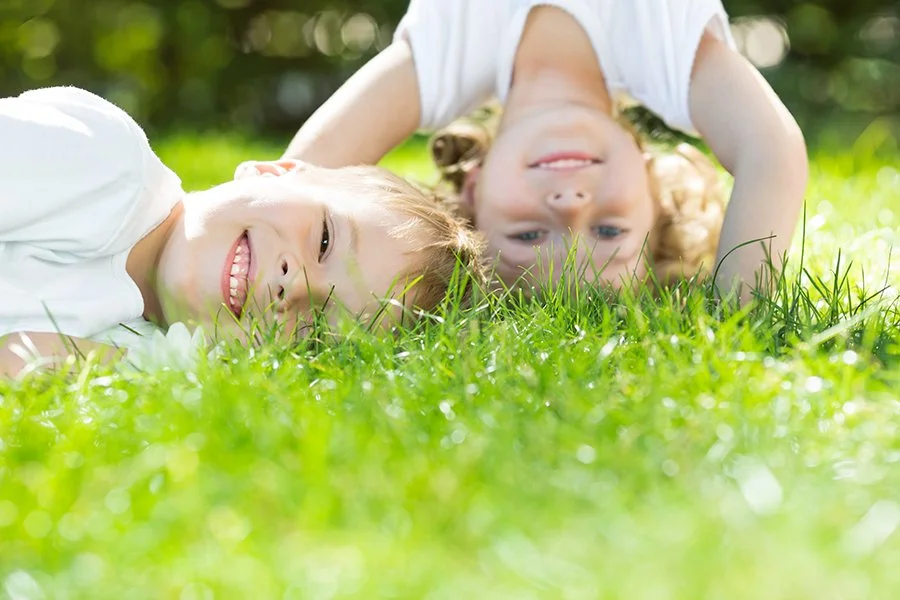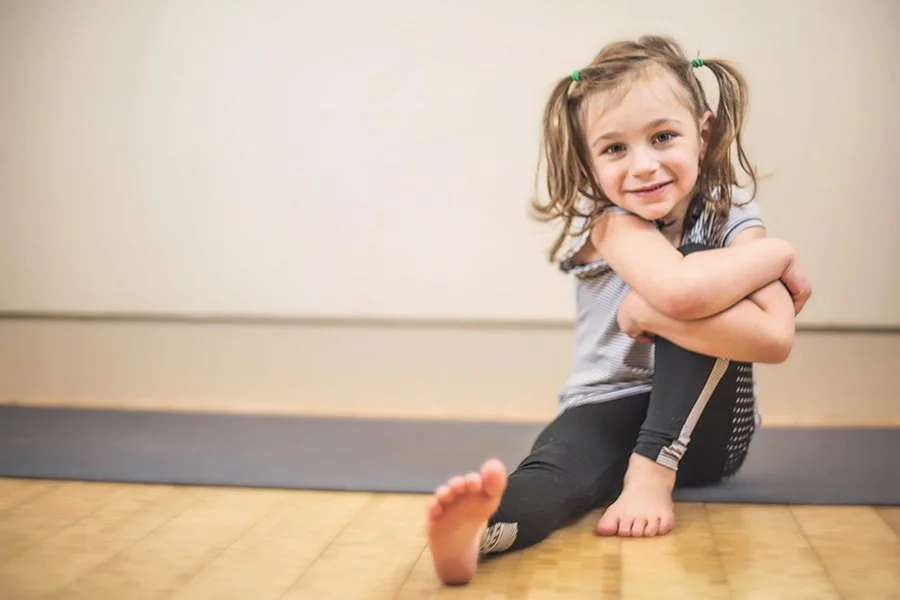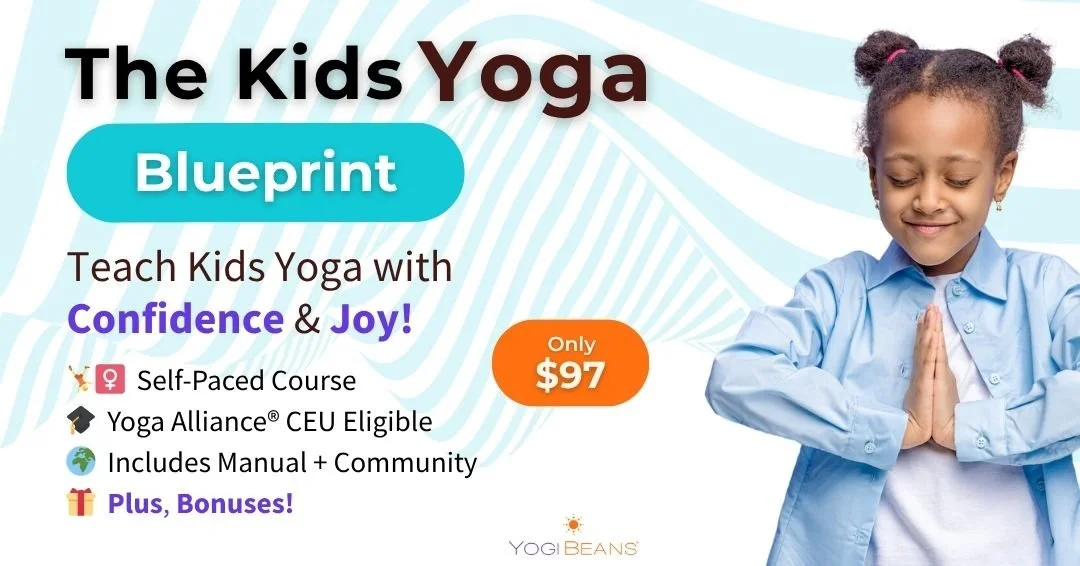10 Things Kids Yoga Teachers Wish Parents Knew
Curious about kids’ yoga but not sure what to expect? - You're not alone!
Even though kids' yoga is growing fast, so much so that many schools are now weaving it into their curriculum, it’s still something quite new for many of us. And we totally understand that it can feel a bit strange or even confusing at first. What actually happens in a class? How do you explain yoga to a child?
If you’re asking yourself these questions, you’re in the right place.
At Yogi Beans, we’re so grateful for every parent who takes the first step in introducing their child to yoga. We know it’s not always easy to try something new, especially when it’s not part of your own experience. But trust us, kids' yoga is full of joy, connection, and lifelong tools your child can carry with them.
If you’d like more info, we’ve created some great articles to help you out, like
These can give you a clear idea of what yoga for kids really looks like.
And in this article, we’re sharing 10 important things kids' yoga teachers wish every parent knew, things that can help you feel more at ease, and make the experience even more special for your child. You’ll see that yoga isn’t about how a pose looks, but about how your child feels in their body, in their emotions, and in their growing confidence.
We hope this helps you feel ready to give it a try, and maybe even book your child’s first class!
I. It’s Not About the Poses
Kids' yoga isn’t about perfect poses, it’s about how they feel.
It’s not a performance or a display; what matters most isn’t how a pose looks, but what it helps your child discover inside. While they might come home excited about their “downward dog” or “tree pose,” the true benefits go far beyond flexibility.
Kids yoga is designed to nurture self-awareness, emotional intelligence, and simple tools to manage stress. The goal isn’t perfect alignment; it’s creating a safe and playful space where your child can connect to their breath, body, and emotions in a way that feels natural and empowering.
II. Your Child is Capable of Much More Than You Realize
Kids are constantly taking in the world around them, learning not just with their minds, but with their whole being. Even if they can’t always put their feelings into words, they’re often more emotionally aware, adaptable, and intuitive than we realize. Whether it’s navigating a tough day at school, processing big emotions, or showing quiet acts of kindness, children are capable of incredible depth and resilience.
Still, it’s easy to forget just how much they can do on their own. In our love and eagerness to help, we sometimes step in too quickly, zipping jackets, tying shoes, packing bags, sending the unspoken message that they need us to do it all. But when we step back and give children time and trust, they often rise to the challenge. The truth is: they can. And when we believe in them, they start believing in themselves too.
III. We Don’t Just Teach Yoga, We Hold Space
Kids' yoga teachers often balance big emotions, social tension, and the need for structure, all within 45 minutes. We’re not just leading poses; we’re creating a container where kids feel seen, heard, and accepted.
If your child comes home talking about how they felt frustrated or had a tough moment, that’s part of the learning. Yoga teaches them it’s okay to feel, and we’re here to help them move through it.
IV. They’re Watching You More Than You Think
Children learn so much just by observing the people around them, especially their parents!
You might ask your child not to watch screens during meals, but if they see you scrolling through your phone at the table, they’re likely to mirror that instead. The way you handle stress, show kindness, or speak to others becomes their quiet blueprint for how to navigate the world.
In kids' yoga, we often see this in real time. A child who watches their parents take a mindful breath, or try a simple stretch, is far more likely to engage with such practices themselves. You don’t need to be perfect, just present. When you model calm, curiosity, and compassion, your child picks up those habits too, often without you even realizing it.
V. Children’s Yoga Is Gentle and Heart-Centred
Children’s yoga isn’t a strict or structured style; it’s soft, simple, and rooted in the heart. It leans more toward Hatha yoga, focusing on gentle movement, breath, and awareness, rather than intense flows like Ashtanga or power yoga.
The goal isn’t to master complex poses or build strength quickly; it’s to help kids feel at ease in their bodies, to connect with their breath, and enjoy moving mindfully. It’s a nurturing practice that meets children where they are, allowing them to explore yoga in a way that feels natural, playful, and empowering.
VI. Yoga is Not a Religion
It’s completely understandable that some parents may feel unsure about yoga, especially if they’ve heard it’s tied to a specific religion. But here’s the truth: yoga is not a religion! The proof is that yoga has traveled around the globe through history, and has been practiced by different systems. Yoga really is just a “philosophy in movement.” It doesn’t require any belief system, and it doesn’t teach spiritual doctrine. Instead, it offers practical tools like mindfulness to help all human beings feel more connected to themselves and walk their own path successfully, no matter what their beliefs are.
In kids’ yoga classes, children aren’t learning any religious rituals or chants; instead, they’re learning to honor and respect themselves as human beings, through movement. Yoga meets each child exactly where they are, embracing their unique background, culture, and faith. It’s a practice of awareness and self-care, not worship, and it welcomes everyone with open arms.
VII. Make Yoga Fun and Rewarding
Kids’ yoga is all about joy, not silence or perfect stillness. It mixes calm moments with games, laughter, and playful movement to keep children engaged and happy. This balance makes yoga feel like fun, not a chore.
If you want to practice at home, keep it light and playful too. Use simple stretches, silly poses, or breathing games to make yoga a joyful experience for the whole family. When yoga feels rewarding, kids are more likely to ask to come back to it.
If you want to explore the basics of kids yoga, check out our book 108 Awesome Yoga Poses for Kids, or take a look at our Kids Yoga Blueprint, a simple, practical training designed for yoga teachers, educators and even parents.
VIII. Help Children See Mistakes as Stepping Stones
In yoga, and in life, mistakes are not failures; they’re part of the learning process. When a child falls out of a pose, or gets distracted during a breathing exercise, it’s a chance to try again, not a reason to feel defeated. Kids’ yoga teaches that wobbling, stumbling, and trying again are all normal, and even valuable.
At home, you can support this mindset by celebrating effort over perfection. If your child says, “I can’t do it,” remind them that growth takes time and practice. When they see mistakes as stepping stones instead of setbacks, they build resilience, confidence, and the courage to keep going, on the mat and far beyond it.
IV. Bring Yoga Into Everyday Moments
Yoga doesn’t end when the class is over; it’s something children can carry with them throughout the day. Encourage your child to see themselves as a yogi beyond the mat: using their breath to calm big feelings, practicing kindness with others, or simply taking a moment to notice what’s going on inside. These small, mindful habits are where yoga really comes to life.
And as mentioned earlier in this article, your actions matter more than what you say. When your child sees you pausing to breathe, staying calm during stressful moments, or choosing kindness, they’ll be more likely to do the same. Together, you can bring yoga into everyday moments and make it a shared, meaningful part of daily life.
V. Let Their Inner Voice Flourish
It’s natural to want to guide your child through every step, to correct, encourage, and offer feedback constantly. But sometimes, the most supportive thing we can do is take a step back. When children aren’t being told what to do, or how to do it every moment, they begin to tune into something even more powerful: their own inner voice.
In kids’ yoga, this means letting them explore a pose in their own way, noticing how their body feels, or deciding when they need rest. At home, it can look like letting them solve a small problem on their own, or taking a breath before reacting. When we give children space, we’re not withdrawing support; we’re making room for confidence and self-awareness, and allowing for trust to grow from within.
By now, you probably understand that yoga really is about so much more than poses: it’s about presence, awareness, and learning to navigate life with a bit more calm and confidence. As a parent, you don’t need to have all the answers or do everything perfectly. Just by being supportive, staying curious, and leading by example, you’re already helping your child get the most out of their yoga journey, on the mat and in everyday life.
Connect with us!
Welcome Friends!
Yogi Beans is a yoga and wellness company for children. Come make the world a brighter place with us!
Teach Kids Yoga with Confidence & Joy!




